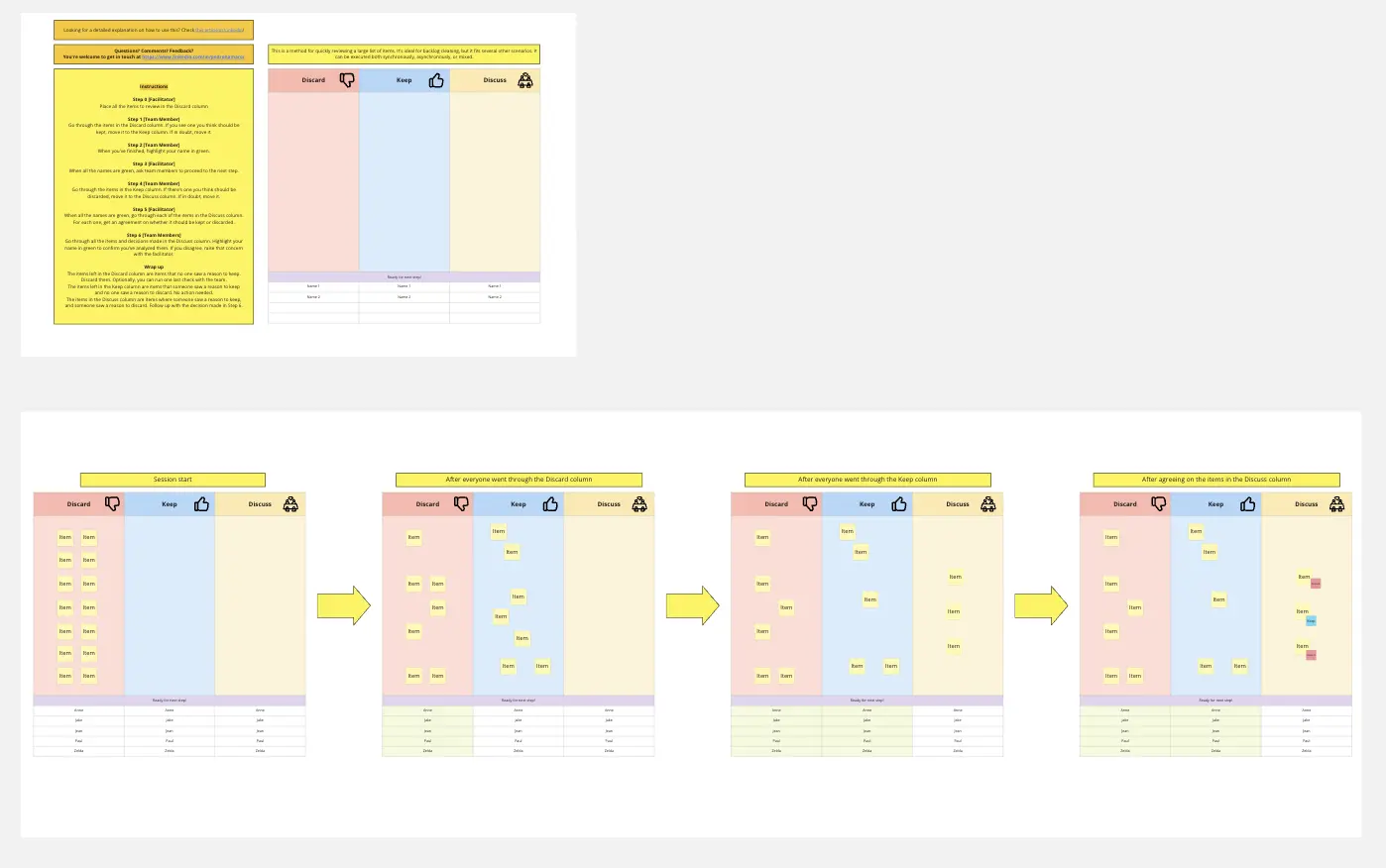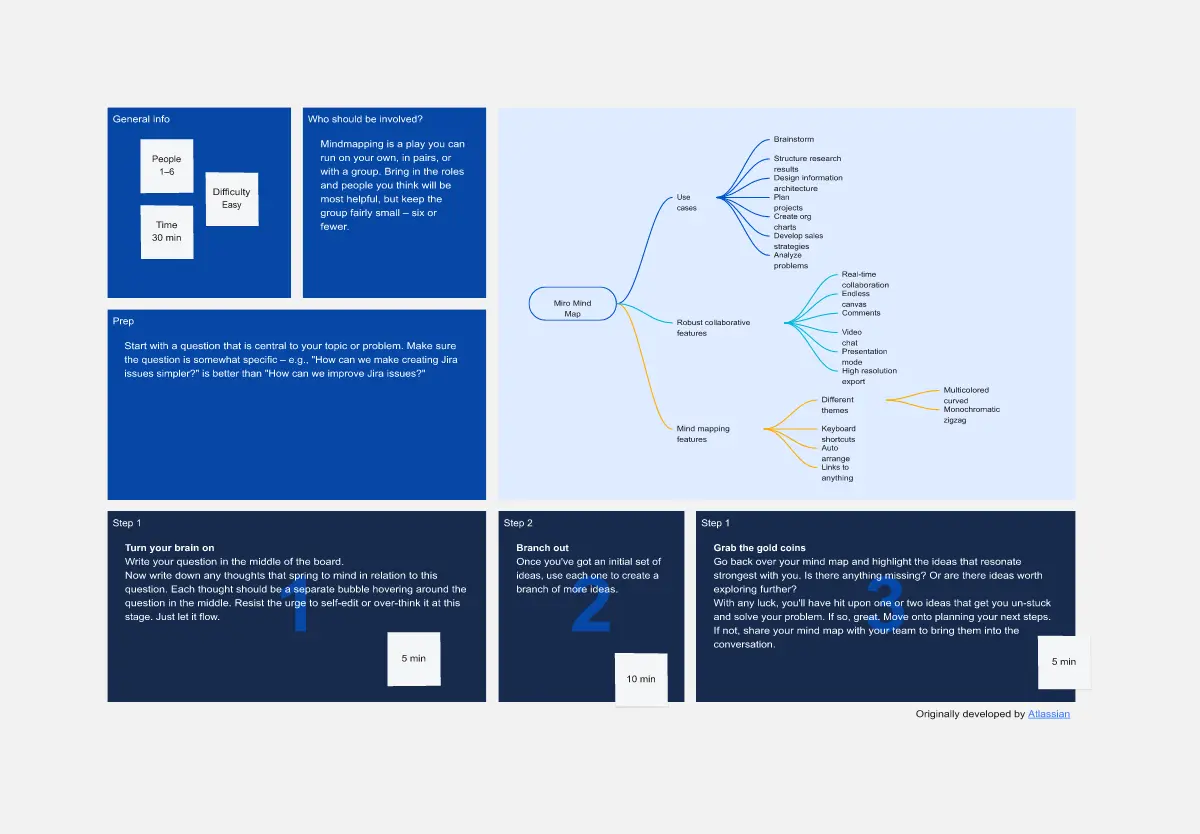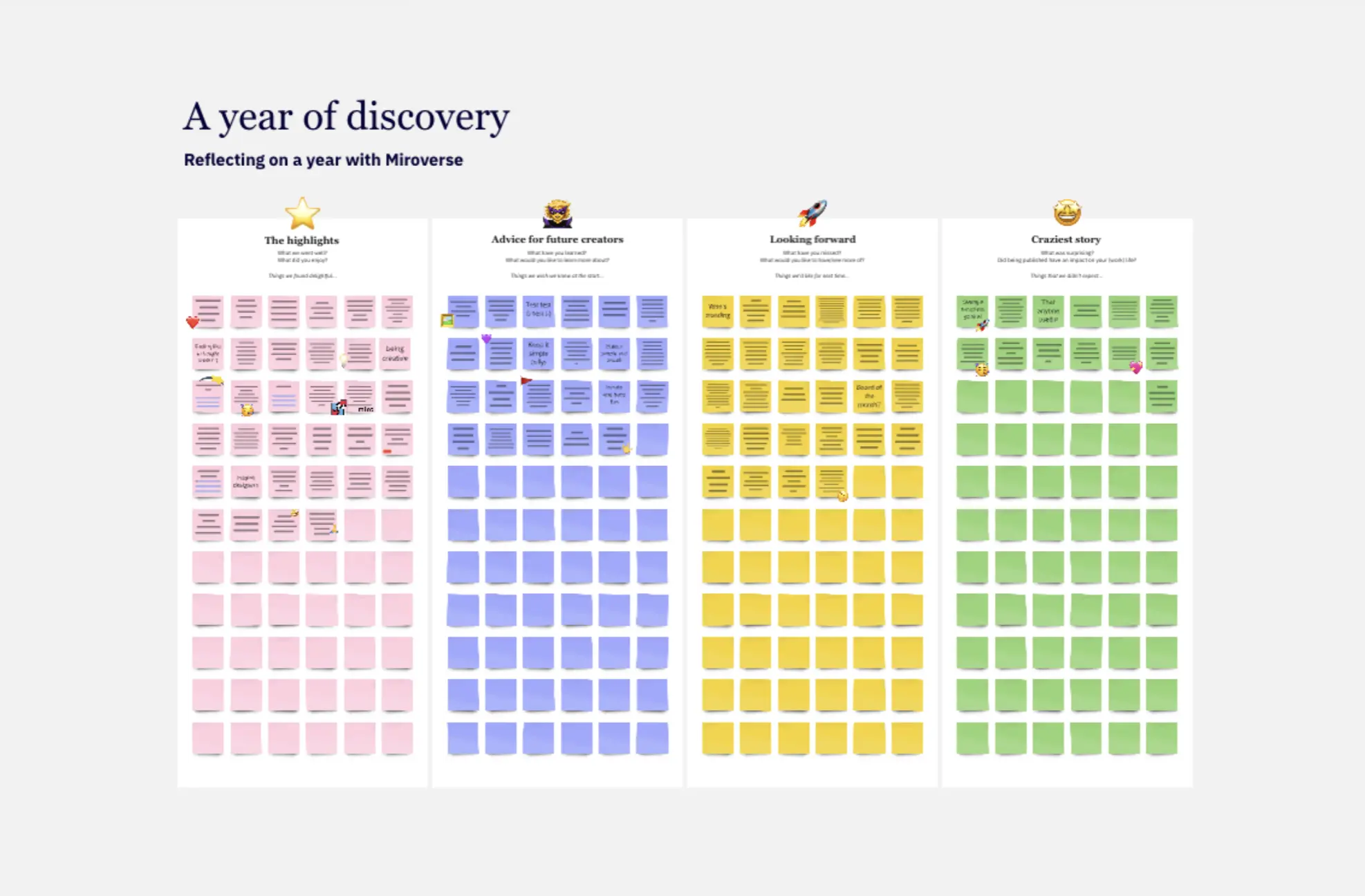Agile Team Events With Jira
Managing agile team events with Jira can streamline your workflow, enhance team collaboration, and ensure that your sprints are productive and well-organized. This template is designed to help product managers and agilists define, plan, and manage their sprints effectively. Below, you'll find step-by-step instructions on how to use this framework to its fullest potential.
Each template is tailored to enhance team collaboration, improve project visibility, and integrate seamlessly with Jira for efficient task management. Whether you're new to Agile methodologies or looking to optimize your existing processes, these templates provide a structured approach to running effective team meetings and keeping your projects on track.
How to use this template for Agile team events
This template includes four key agile team events for you to populate and organize your Jira tasks to create more prioritized, collaborative work. They include:
Sprint Planning: Collaboratively define and organize your upcoming sprint. Visualize capacity, prioritize tasks, and ensure your team is aligned on sprint goals.
Daily Standup: Conduct efficient daily check-ins to share progress, identify blockers, and plan the day's work. The visual board makes it easy to spot bottlenecks and adjust priorities on the fly.
Backlog Refinement: Review, prioritize, and refine your product backlog as a team. Add details, estimate effort, and ensure upcoming work is well-understood and ready for future sprints.
Sprint Retrospective: Reflect on your team's successes and challenges to continuously improve your processes and teamwork.
1 – Sprint planning
What is sprint planning?
Teams use Sprint Planning to determine what tasks they will tackle next and ensure everyone is aligned on the goals.
Connect Miro to Jira: If you haven't connected Miro to Jira yet, log in first.
Select your Jira Board: Look for the "Jira board" dropdown and search for the board you want to use.
Set up columns: The first "Columns" field will default to "Status." Switch it to "Sprint" to organize tasks by sprint.
Choose specific sprints: Use the second "Columns" field to select which sprints to display.
Drag and drop: Move Jira cards between columns to update them. Changes sync automatically between Miro and Jira.
Capacity planning
Enable capacity and load: These metrics appear at the top of each column if at least one issue is on the board. Turn them on from the board settings if needed.
Add team capacity: Enter your team's capacity in the "Capacity" section. The planner will compare it to the "Load" (total story points) and indicate if you're overbooked.
Balance workload: Drag Jira cards between sprints to balance the workload. This updates each sprint's capacity and syncs with Jira.
2 – Daily Standup
What are daily standups?
Daily Standup is a quick team huddle for members to share updates and flag any blockers.
How to get started
Connect Miro to Jira: Log in if you haven't already.
Select your Jira Board: Use the "Jira board" dropdown to find your board.
Customize columns: By default, you'll see "Status" with up to three columns. Customize this using the second "Columns" field.
Organize by team member: Click on the "add swimlanes" field and choose "Assignee." Use the second "Swimlanes" field to select team members.
Update status: Drag Jira cards between columns to update their status. Changes sync automatically between Miro and Jira.
3 – Retrospective
What are retrospectives?
Retrospectives allow teams to reflect on successes and failures to improve future practices.
How to get started
Enable private mode: Use the action shortcut or find it in the facilitation tools menu.
Set a timer: Keep your retro on track with a timer, which can be paused or extended as needed.
Group Sticky Notes: Use clustering to group similar sticky notes by color, tag, author, keyword, or sentiment.
Vote on clusters: Determine which ideas are most important for action. Set up voting from the top right, near share settings.
Convert to Miro Cards: Assign these cards to team members. Turn Miro cards into Jira cards to maintain momentum.
4 – Backlog refinement
What is backlog refinement?
Backlog refinement is the team's chance to tidy up their to-do list and ensure everyone understands upcoming tasks.
How to get started
Add Jira Cards: Open the Jira Cards app from the creation bar or paste a Jira issue URL directly onto the board.
Review backlog items: Discuss and clarify items with your team. Create new Jira Cards directly in Miro.
Update Story Points: Use the action shortcut to update story points or effort estimates.
Prioritize items: Drag rows up or down to reorder them.
Remove outdated items: Archive unnecessary items to keep your backlog lean.
Using this board to conduct Agile team events with Jira can significantly enhance your team's productivity and collaboration. By following these step-by-step instructions, product managers and agilists can efficiently manage sprints, daily standups, retrospectives, and backlog refinement. For more detailed walkthroughs and troubleshooting, refer to the help center articles linked within each section.
Categories
Similar templates






Comments
Read our Community Guidelines and Terms of Use.